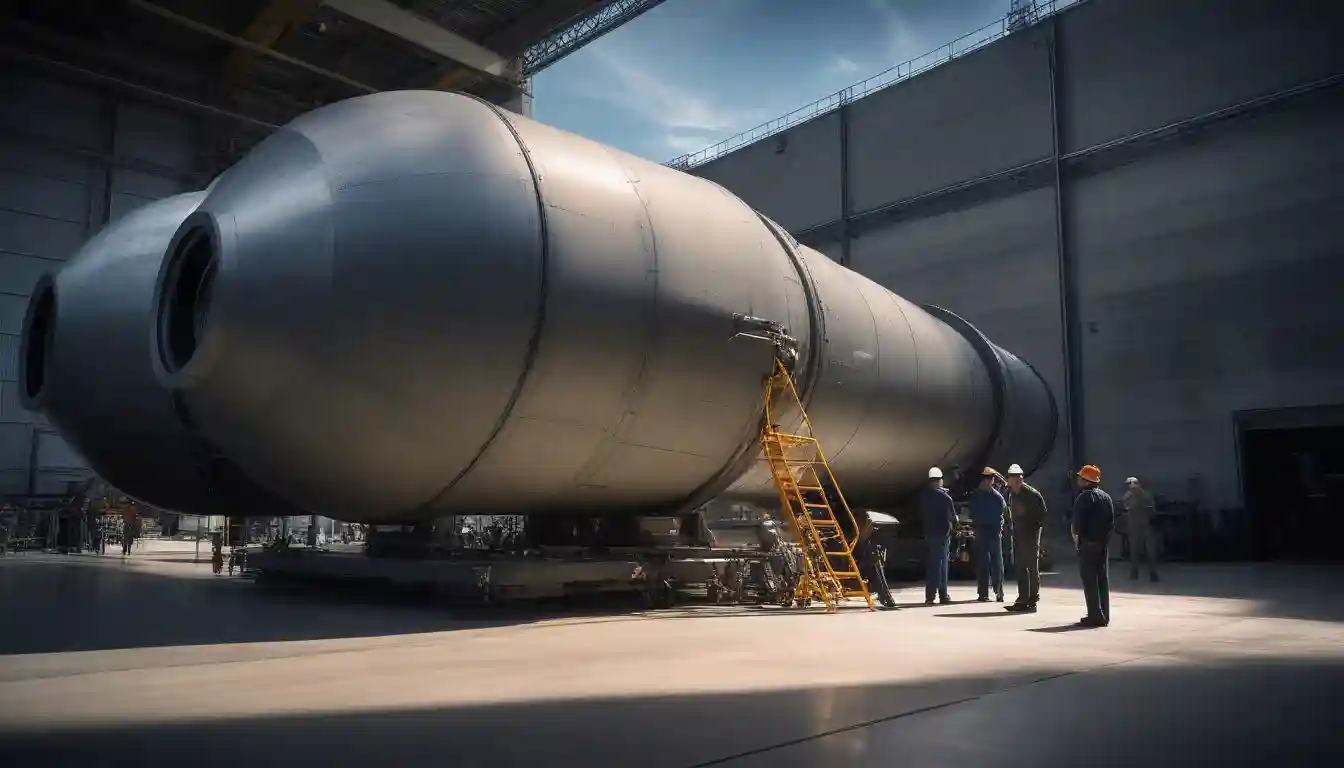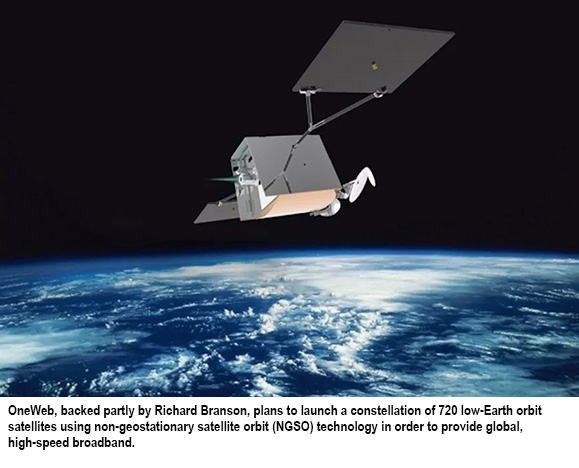
SpinLaunch Raises $30 Million to Build Satellite Internet Network Challenging Starlink
The David Strategy: SpinLaunch Bets $30M on Disrupting Satellite Internet's Giants
LONG BEACH, California — In an industry where billion-dollar constellations have become the ante to play, SpinLaunch is wagering that precision engineering can triumph over brute financial force.

The space technology company announced today it has secured $30 million in funding to accelerate development of Meridian Space, its low-earth orbit satellite broadband constellation designed to challenge the dominance of SpaceX's Starlink and Amazon's Project Kuiper through radical cost efficiency rather than scale.
The funding round, led by existing investor ATW Partners with strategic participation from Kongsberg Defence & Aerospace, arrives at a pivotal moment for the satellite internet industry. While established players deploy thousands of satellites and secure millions of customers, SpinLaunch is pursuing what industry analysts describe as a "precision strike" approach—targeting specific market segments with fundamentally lower-cost infrastructure.
The Engineering Gambit Behind Lower Costs
At the heart of SpinLaunch's strategy lies a technological breakthrough that the company believes could redefine satellite economics. The firm has successfully completed full-scale testing of its proprietary multi-band reconfigurable reflectarray antenna—a critical component enabling what it terms "ultra-low capex design."
Unlike conventional satellite antennas that can be bulky, power-hungry, and prohibitively expensive, SpinLaunch's solution offers a compact, energy-efficient alternative specifically engineered for next-generation LEO networks. This innovation represents more than incremental improvement; it embodies a fundamental rethinking of satellite architecture.
"Validating our reconfigurable reflectarray antenna through full-scale testing confirms we can deliver multi-band capability without the cost and complexity of traditional designs," explained David Wrenn, Chief Innovation Officer at SpinLaunch. The breakthrough positions the company to achieve both technical and operational objectives that seemed improbable just months ago.
A bent-pipe satellite architecture, also known as a transparent payload, acts as a simple repeater in space. It receives a signal from a ground station, amplifies it, and retransmits it back to Earth on a different frequency without processing or altering the signal's content. This design keeps the complexity and intelligence on the ground, making the satellite itself a straightforward "bent pipe" for data.
The significance extends beyond hardware. Industry experts suggest that SpinLaunch's approach—combining innovative antenna technology with "bent-pipe" transparent payload architecture and fixed-track orbital patterns—could reduce capital expenditure per gigabit of capacity by an order of magnitude compared to traditional LEO designs.
Market Realities and Strategic Positioning
The competitive landscape SpinLaunch enters is formidable. Starlink operates approximately 8,000 active satellites serving over 6 million customers across 140 markets. Amazon's Project Kuiper has begun production deployments, recently securing major enterprise contracts including Australia's NBN Co. Meanwhile, European alternatives like Eutelsat/OneWeb are gaining traction through sovereignty-focused positioning.
Comparison of active satellites in major LEO constellations as of mid-2025, showing the scale of established players versus new entrants.
| Constellation | Number of Active Satellites (mid-2025 estimate/actual) |
|---|---|
| Starlink (SpaceX) | ~7,600+ |
| OneWeb (Eutelsat OneWeb) | ~634 |
| Project Kuiper (Amazon) | 78 |
Yet SpinLaunch CEO Massimiliano Ladovaz, whose credentials include former senior roles at OneWeb and Eutelsat, sees opportunity within this apparent saturation. The company is targeting first customer connectivity in the second half of 2026, focusing on enterprise and government clients seeking alternatives to dominant U.S. platforms.
"We're not just building momentum—we're earning trust," Ladovaz stated. "From technical milestones to collaboration with early adopters, the continued backing of insiders and partners like Kongsberg underscores the credibility of our approach and the progress we've made."
This strategy reflects broader geopolitical currents. European governments and defense establishments increasingly seek satellite communication options independent of U.S. technology giants. Kongsberg's strategic investment signals recognition of this demand.
"We chose to partner with SpinLaunch because we saw a bold vision backed by a uniquely capable team," noted a research in defence & aerospace. "This investment reflects our shared belief in their ability to deliver a new model for satellite communications through the Meridian Space constellation."
The Economics of Disruption
Market analysis suggests SpinLaunch's business model hinges on achieving structural cost advantages through multiple innovations. The company's partnership with Kongsberg NanoAvionics for manufacturing its initial 280 satellites—part of a planned 1,200-satellite constellation—demonstrates commitment to industrialized production.
Projected Capital Expenditure (Capex) per Gigabit of capacity, comparing SpinLaunch's Meridian system to traditional LEO constellations.
| Constellation/System | Projected Total Capex (USD) | Projected Total Capacity (Gbps) | Projected Capex per Gigabit (USD) |
|---|---|---|---|
| SpinLaunch (Meridian) | ~$1 Billion - $2 Billion | 2,000 | ~$500,000 - $1,000,000 |
| SpaceX (Starlink) | ~$10 Billion+ | 20,000 - 165,000 | ~$60,606 - $500,000 |
| Amazon (Project Kuiper) | ~$10 Billion - $20 Billion | >100,000 | <$100,000 - $200,000 |
| Eutelsat OneWeb | ~$3.4 Billion (for Gen 1) | 1,200 | ~$2,833,333 |
Early financial projections indicate the Meridian system could deliver over 2 terabits per second of global capacity using approximately 250 satellites, translating to roughly 8 gigabits per satellite. While modest compared to Starlink's per-satellite capabilities, the economics become compelling if manufacturing and launch costs align with company projections.
The constellation's design philosophy—emphasizing simplicity over complexity—deliberately trades some performance flexibility for dramatic cost reductions. This approach targets specific market segments where cost efficiency matters more than peak performance, particularly in maritime, energy, and remote industrial applications.
Investment Implications and Forward Outlook
From an investment perspective, SpinLaunch represents what market analysts characterize as a "contrarian LEO thesis"—betting that architectural innovation can create defensible market positions despite late entry into a scale-dominated industry.
A contrarian investment thesis is the core argument for an investment that deliberately goes against prevailing market sentiment. It outlines the specific reasons why you believe an asset is fundamentally mispriced by the majority of investors and why its true value will eventually be recognized.
The $30 million funding, while substantial for SpinLaunch, pales against the multi-billion-dollar investments by established competitors. However, the company's capital efficiency approach could potentially deliver competitive returns on significantly lower total investment.
Several factors suggest cautious optimism for the investment thesis. Growing demand for satellite internet sovereignty—particularly in Europe and allied nations—creates market opportunities independent of consumer broadband competition. Additionally, SpinLaunch's open architecture design appeals to enterprise customers seeking integration flexibility unavailable from closed platforms.

Risk factors remain significant. The company must execute complex satellite manufacturing, secure reliable heavy-lift launch capacity, and navigate increasingly crowded orbital environments. Spectrum coordination challenges could prove particularly acute as LEO constellations multiply.
Industry analysts suggest monitoring several key milestones over the next 18 months: securing binding launch contracts, announcing anchor customers, and demonstrating actual link performance through initial orbital deployments.
The Broader Transformation
SpinLaunch's emergence reflects broader changes reshaping the space economy. As satellite internet transitions from experimental technology to critical infrastructure, market dynamics increasingly favor specialized solutions over one-size-fits-all platforms.
The company's trajectory illustrates how technological innovation can create market entry opportunities even in apparently mature industries. Success would validate the principle that engineering excellence can overcome pure capital scale—a lesson extending far beyond satellite communications.
For investors, SpinLaunch represents both the promise and peril of deep technology ventures: the potential for transformative returns balanced against execution risks that could prove insurmountable. As Meridian Space progresses toward its 2026 service target, it will test whether precision engineering can indeed triumph over financial might in the new space economy.
Market analysts recommend consulting financial advisors before making investment decisions. Past performance does not guarantee future results.